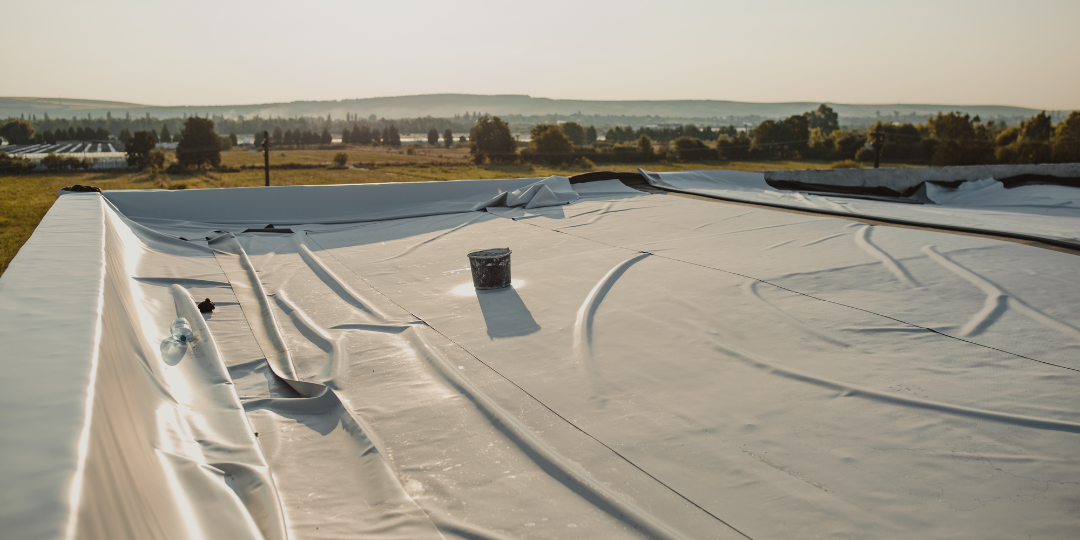When it comes to roofing solutions, there are a plethora of roofing types and materials available. One building material that has gained significant popularity in recent years isTPO roofing. Thermoplastic Olefin (TPO) roofing is a versatile, durable, and energy-efficient roofing option that is making waves in the construction industry. In this blog, we’ll dive into the world of TPO roofing, exploring what it is, the installation process, and why it might be the right choice for your roofing needs.
What is TPO Roofing?
TPO stands for Thermoplastic Olefin, which is a type of single-ply rubber roofing material. TPO roofing is made from a combination of polypropylene (a type of plastic) and ethylene-propylene rubber, which is reinforced with polyester. This unique blend of components results in a roofing membrane that is strong, flexible, and resistant to various environmental conditions.
TPO roofing is known for its durability and resistance to chemical exposure, making it an ideal choice for flat roofs and commercial roofing applications. Its construction consists of several single layers, including an anti-oxidation membrane, a fireproof layer, and a non-woven fabric layer. These layers work together to provide superior protection against the elements and ensure a long-lasting single-ply roofing system.
Roofing Installation Process
Installing TPO roofingrequires a specific set of skills and tools. Here’s an overview of the installation process:
1. Substrate Preparation: The existing roof or substrate is prepared by cleaning it thoroughly and making any necessary repairs. A smooth and clean surface is essential for proper TPO adhesion.
2. Insulation: An insulation layer is applied to the prepared substrate. This insulation provides thermal resistance, which improves energy efficiency.
3. TPO Membrane Installation: TPO roofing comes in rolls that are unwound and laid out on the roof surface. The membrane is then attached to the substrate using adhesives, mechanical fasteners, or heat welding. Seams are carefully sealed to ensure a watertight finish.
4. Flashing and Edge Detailing: Flashing is installed around roof penetrations such as vents and chimneys. Edge detailing ensures that the TPO membrane is securely attached to the roof’s perimeter.
5. Quality Assurance: A thorough inspection is conducted to ensure that the TPO roofing is properly installed, with no wrinkles, bubbles, or other imperfections.
6. Clean-Up: Any debris or waste material from the installation is cleaned up, leaving the roof and surrounding area in pristine condition.
Is TPO Roofing Right for You?
Now that you know what TPO roofing is and its advantages, you might be wondering if it’s the right choice for your roofing needs. Here are some factors to consider:
1. Climate: It iis an excellent choice for regions with sunny climates due to its heat resistance and reflective properties. It can help reduce cooling costs in such areas. However, it performs well in various climates, making it a popular choice.
2. Budget: TPO roofing is cost-effective compared to some other roofing materials, making it a suitable choice for those with budget constraints.
3. Longevity: If you’re looking for a roofing system with a long lifespan, this is a good option. Properly installed TPO roofing has a service life of 20-30 years or more.
4. Energy Efficiency: If you’re interested in improving the energy efficiency of your building, TPO roofing’s reflective properties can help reduce your energy usage and energy costs.
5. Environmental Considerations: If sustainability is a priority for you, TPO roofing is a recyclable material, which can contribute to your green building initiatives.
6. Installation Expertise: It’s crucial to hire experienced roofing contractors who are well-versed in TPO installation. Call our team at Pinnacle Roofing Associates for a proper installation.
7. Design and Aesthetics: TPO roofing comes in a variety of colors, so you have some flexibility in choosing a roofing material that complements the overall design of your building.
8. Local Codes and Regulations: Make sure that TPO roofing is permitted and meets local building codes and regulations in your area.
9. Regular maintenance: While TPO roofing is low-maintenance compared to some other materials, it still requires regular inspection and maintenance to ensure its longevity. Especially after stormy weather, it is always recommended to check for any major issues in your roof structure that may have occurred.
TPO roofing is a modern, efficient, and environmentally friendly roofing solution that offers numerous advantages for both residential and commercial buildings. Its energy efficiency, durability, affordability, and ease of installation make it a compelling choice for a wide range of roofing projects. However, the key to a successful TPO roofing system is professional installation by experienced contractors.
AtPinnacle Roofing Associates, we specialize in delivering high-quality roofing solutions that meet your specific needs. If you’re considering doing a TPO roof installation for your next roofing project, consult with our experts who can assess your requirements and provide customized solutions. With the right materials and installation, TPO roofing can provide you with a reliable, long-lasting, and energy-efficient roofing system that stands the test of time.
To take the next step toward improving your roofing system with TPO roofing, contact our roofing team today. Our experienced roofers are ready to provide you with an estimate for your roofing project. Don’t miss the opportunity to enhance your building’s efficiency and longevity with TPO roofing –contact us now!







